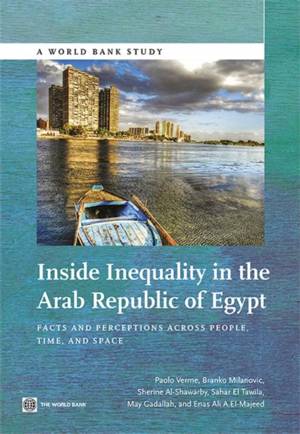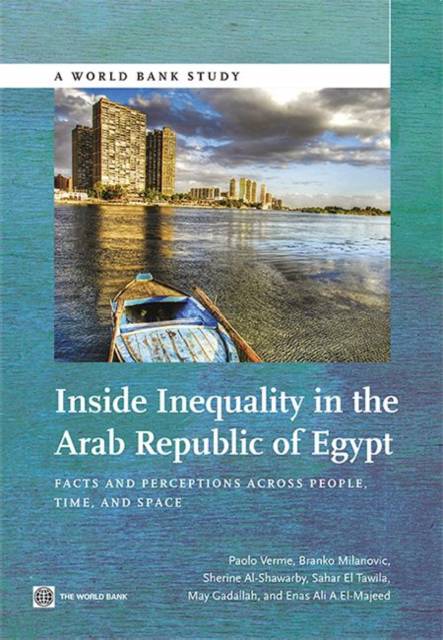
- Retrait gratuit dans votre magasin Club
- 7.000.000 titres dans notre catalogue
- Payer en toute sécurité
- Toujours un magasin près de chez vous
- Retrait gratuit dans votre magasin Club
- 7.000.0000 titres dans notre catalogue
- Payer en toute sécurité
- Toujours un magasin près de chez vous
Inside Inequality in the Arab Republic of Egypt
Facts and Perceptions Across People, Time, and Space
Paolo Verme, Branko Milanovic, Sherine Al-Shawarby
50,95 €
+ 101 points
Description
This book joins four papers prepared in the framework of the Egypt inequality study financed by the World Bank. The first paper prepared by Sherine Al-Shawarby reviews the studies on inequality in Egypt since the 1950s with the double objective of illustrating the importance attributed to inequality through time and of presenting and compare the main published statistics on inequality. To our knowledge, this is the first time that such a comprehensive review is carried. The second paper prepared by Branko Milanovic turns to the global and spatial dimensions of inequality. The objective here is to put Egypt inequality in the global context and better understand the origin and size of spatial inequalities within Egypt using different forms of measurement across regions and urban and rural areas. The Egyptian society remains deeply divided across space and in terms of welfare and this study unveils some of the hidden features of this inequality. The third paper prepared by Paolo Verme studies facts and perceptions of inequality during the period 2000-2009, the period that preceded the Egyptian revolution. The objective of this part is to provide some initial elements that could explain the apparent mismatch between inequality measured with household surveys and inequality aversion measured by values surveys. No such study has been carried out before in the Middle-East and North-Africa (MENA) region and this seemed a particular important and timely topic to address in the light of the unfolding developments in the Arab region. The fourth paper prepared by Sahar El Tawila, May Gadallah and Enas Ali A. El-Majeed assesses the state of poverty and inequality among the poorest villages of Egypt. The paper attempts to explain the level of inequality in an effort to disentangle those factors that derive from household abilities from those factors that derive from local opportunities. This is the first time that such study is conducted in Egypt. The book should be of interest to any observer of the political and economic evolution of the Arab region in the past few years and to poverty and inequality specialists that wish to have a deeper understanding of the distribution of incomes in Egypt and other countries in the MENA region.
Spécifications
Parties prenantes
- Auteur(s) :
- Editeur:
Contenu
- Nombre de pages :
- 152
- Langue:
- Anglais
- Collection :
Caractéristiques
- EAN:
- 9781464801983
- Date de parution :
- 05-04-14
- Format:
- Livre broché
- Format numérique:
- Trade paperback (VS)
- Dimensions :
- 178 mm x 254 mm
- Poids :
- 276 g

Les avis
Nous publions uniquement les avis qui respectent les conditions requises. Consultez nos conditions pour les avis.






